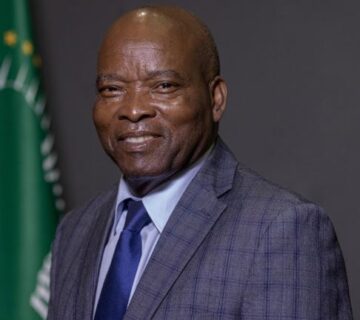By Ibraheem Haruna
Climate justice is not merely about addressing environmental change. It is about rectifying deep-seated inequalities that make some communities more vulnerable than others. Africa, though contributing the least to global greenhouse gas emissions, bears a disproportionate burden of climate impacts. Among the most pressing challenges is drought, which directly affects water availability, agricultural productivity, livelihoods, and public health. Yet, amid these adversities, Africa is also a continent of resilience, innovation, and indigenous wisdom. This paper examines climate justice through the lens of drought resilience and water resource management, proposing sustainable, inclusive, and community-centered solutions that elevate Africa’s voice and agency in the global climate discourse.
The Climate-Water-Drought Nexus in Africa
Africa is home to some of the most climate-vulnerable regions in the world. Rising temperatures, shifting rainfall patterns, and increased frequency of extreme droughts have made water insecurity a defining issue for the continent. From the Sahel to the Horn of Africa and southern Africa’s drylands, millions are affected annually by climate-induced droughts. In countries like Ethiopia and Kenya, prolonged dry spells have led to mass displacement, crop failure, and acute water shortages (IPCC, 2022).
Water scarcity exacerbates poverty, undermines food security, increases gender inequality, and fuels conflict. In many rural communities, women and girls walk for hours each day to fetch water, often from unsafe sources. Climate justice demands that we see these impacts not as isolated ecological events but as interconnected systems of structural inequality (UN Women, 2020).
Indigenous Knowledge and Community-led Adaptation
Africa’s traditional knowledge systems offer powerful tools for climate adaptation. Indigenous water harvesting techniques—such as zai pits in Burkina Faso or the terracing systems used in Ethiopian highlands—have helped communities thrive in dry environments for centuries (Reij et al., 2009).
For example, in Niger, the Farmer-Managed Natural Regeneration (FMNR) technique has led to the regreening of over 5 million hectares of degraded land by empowering farmers to nurture tree stumps and integrate them with crop farming. This method has restored soil fertility, improved water retention, and increased crop yields—without reliance on external irrigation infrastructure (World Resources Institute, 2018).
These grassroots approaches are low-cost, scalable, and resilient. Importantly, they are rooted in local culture, making them socially acceptable and easier to sustain. Climate justice must prioritize these community-led, culturally grounded solutions, not impose foreign technologies detached from local contexts.
Youth and Innovation in Water Resilience
Africa’s youth are not waiting for permission to lead; they are already reshaping the narrative. In Kenya, a startup called Majik Water is using atmospheric water generators to condense and collect clean drinking water from air (Majik Water, 2021). In Nigeria, young innovators are building solar-powered boreholes to supply clean water to off-grid communities (UNICEF Nigeria, 2023).
Digital platforms and mobile technologies are enabling real-time climate monitoring, crowdsourced water data, and community-based early warning systems. These innovations are particularly effective when combined with local knowledge and driven by the energy of youth movements. Climate justice must include space for youth leadership, capacity-building, and access to funding.
Policy Gaps and the Need for a Justice-Centered Approach
Despite regional frameworks like the African Union’s Climate Change and Resilient Development Strategy (2022–2032), there remains a disconnect between policy rhetoric and community-level implementation. Top-down policies often fail to integrate local realities, while climate finance rarely reaches the grassroots (African Union, 2022).
There is a critical need to decentralize water governance. Governments must empower local councils, women’s cooperatives, and youth-led initiatives to manage and monitor water resources. Legal recognition of customary land and water rights—especially for pastoralists and Indigenous peoples—is vital for equitable adaptation.
Moreover, climate finance mechanisms, such as the Green Climate Fund must streamline access for local actors. Without justice in finance, we cannot achieve justice in climate adaptation (Oxfam, 2021).
Country Snapshots: Ethiopia and Namibia
In Ethiopia, the Productive Safety Net Programme (PSNP) has integrated climate resilience by supporting watershed management, small-scale irrigation, and community water infrastructure. Paired with reforestation efforts, PSNP has strengthened food and water security for millions (World Bank, 2020).
In Namibia, a country already classified as semi-arid, water governance reform has included partnerships with local communities to manage decentralized water points. By granting communities ownership and responsibility, these systems have improved functionality and accountability. Namibia’s National Drought Policy also emphasizes proactive risk management rather than emergency response—a principle that can be replicated across the continent (FAO, 2016).
Actionable Solutions
- Invest in Indigenous and Low-Tech Solutions: Prioritise traditional water harvesting and conservation techniques that are climate-smart and cost-effective.
- Decentralise Water Governance: Build inclusive local institutions with authority and resources to manage water sustainably.
- Support Youth-Led Innovation: Establish regional incubators and climate innovation funds targeting young entrepreneurs and grassroots organisations.
- Strengthen Climate Education: Integrate climate resilience into national school curricula and vocational training programs.
- Streamline Climate Finance Access: Simplify application processes, provide technical support, and create dedicated funds for local and Indigenous projects.
- Promote Gender Equity in Water Management: Involve women in decision-making at all levels—from household to national water policy boards.
A Vision for African Climate Justice
Africa’s climate journey is not only about survival—it is about leadership. Rising with resilience means reclaiming our agency, respecting our heritage, and investing in future generations. Drought resilience is possible not through imported solutions, but through justice-driven policies, people-powered innovation, and a deep commitment to equity.
The future of climate justice in Africa lies in our ability to listen to the land and to each other. To blend science with indigenous wisdom, and to empower every village, youth, and woman to lead. This is not just about adaptation, it is about transformation. And Africa is ready to rise.






Thank you for this amazing insight
Great
Great write up